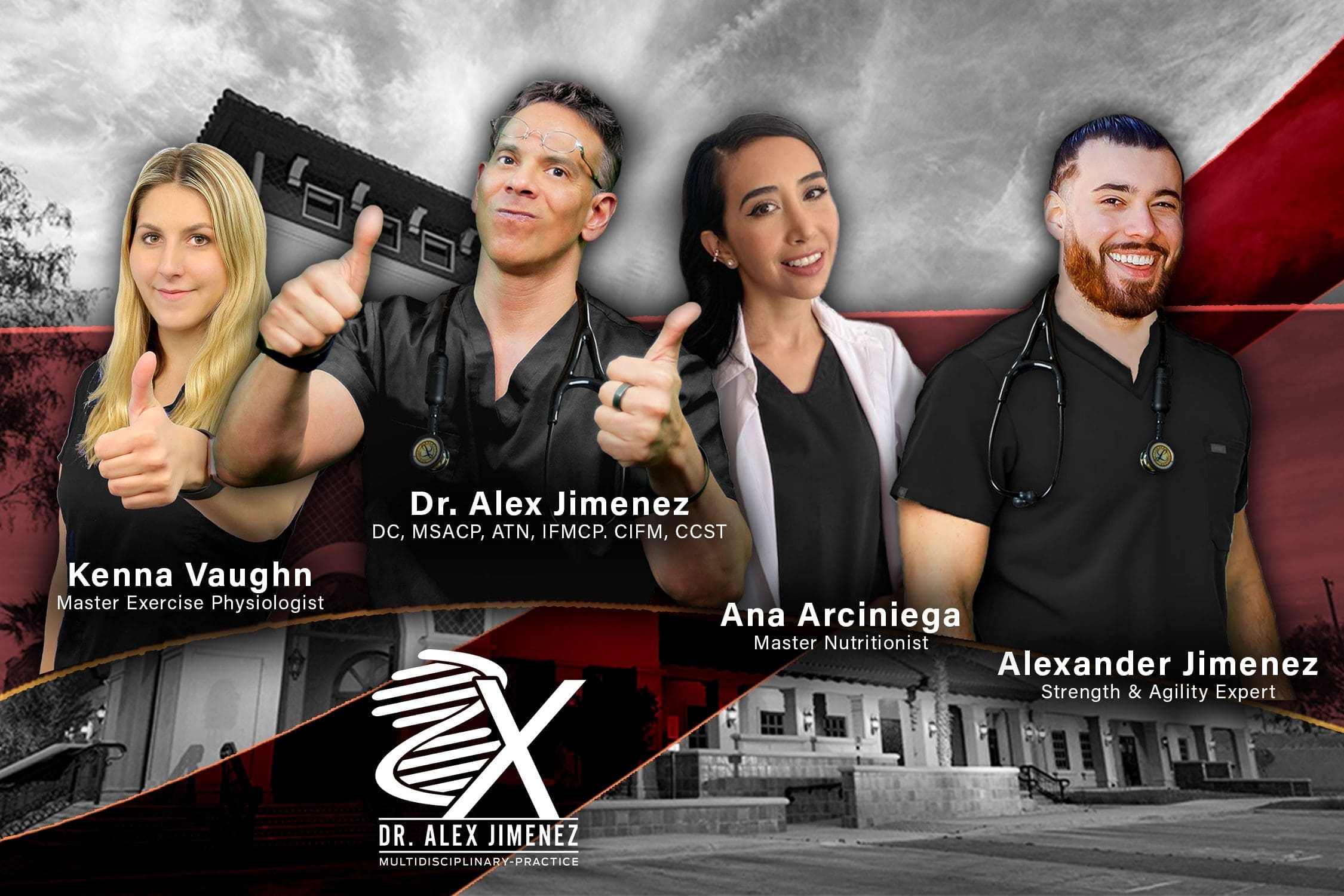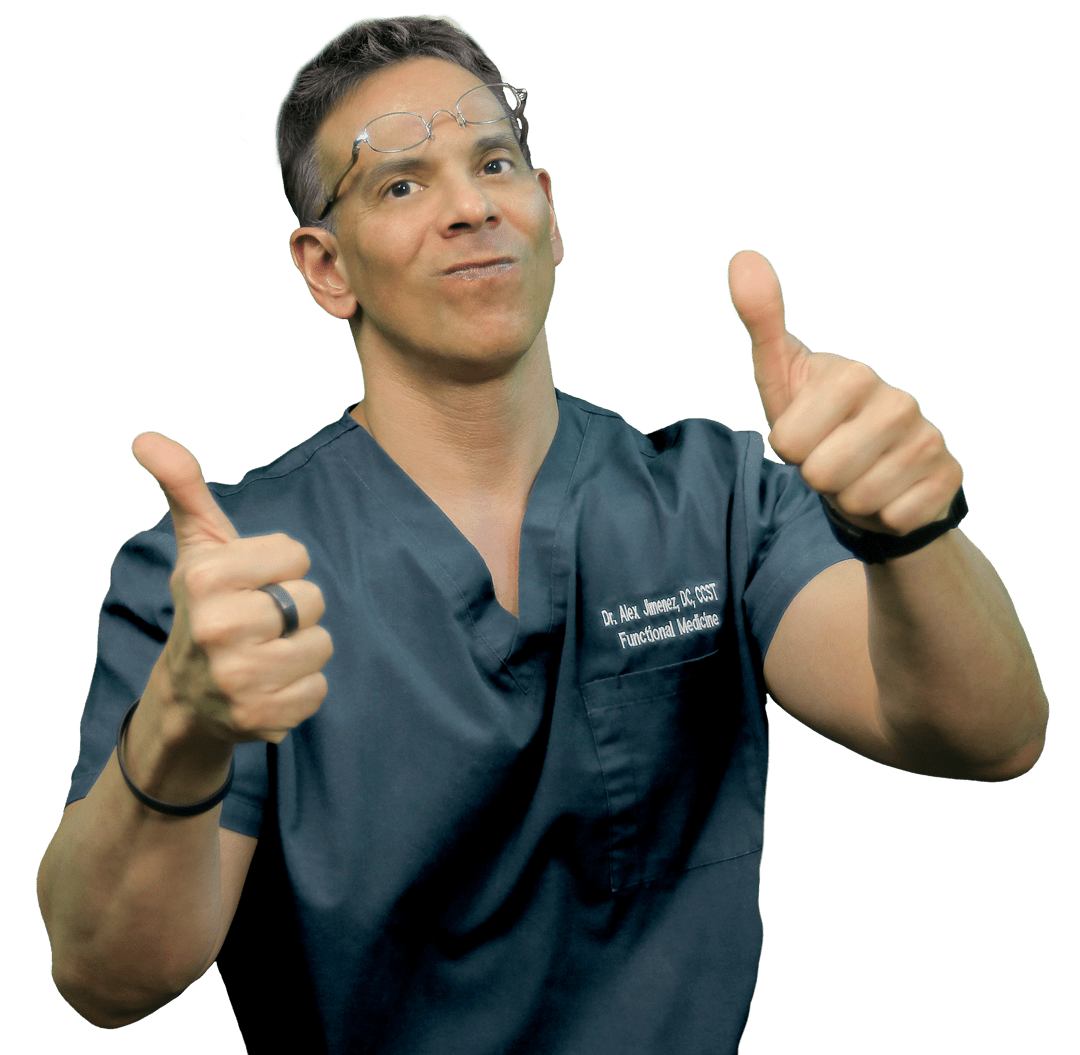Discover how good posture can help alleviate back pain and improve your health and well-being with simple tips and techniques.
The Clinical Rationale for Chiropractic Care and Good Posture in Managing Low Back Pain
Low back pain is a widespread issue that affects millions of people worldwide, making everyday tasks like sitting, standing, or lifting a challenge. According to the World Health Organization (WHO), approximately 619 million people experienced low back pain in 2020, with projections estimating an increase to 843 million by 2050 (World Health Organization, 2023). It’s the leading cause of disability globally, impacting work productivity, mental health, and overall quality of life. While there are many ways to manage low back pain, chiropractic care and maintaining good posture stand out as effective, non-invasive approaches. This comprehensive guide explores the clinical rationale behind these methods, the role of the lumbar spine, and how experts like Dr. Alexander Jimenez in El Paso, Texas, help patients recover, particularly in personal injury cases.
Understanding Low Back Pain
Definition and Causes
Low back pain is defined as discomfort or pain in the area between the lower edge of the ribs and the buttock. It can be acute (lasting less than 4 weeks), sub-acute (4-12 weeks), or chronic (more than 12 weeks) (World Health Organization, 2023). The pain can range from a dull, constant ache to a sudden, sharp sensation that makes movement difficult. Common symptoms include stiffness, reduced range of motion, and sometimes radiating pain into the legs, known as sciatica (Mayo Clinic, 2024).
The causes of low back pain are varied and often multifactorial. They include:
- Muscle or ligament strains: Often due to overuse, sudden movements, or improper lifting.
- Disc issues: Such as herniated or degenerated discs that press on nerves.
- Arthritis: Inflammation of spinal joints, like osteoarthritis or ankylosing spondylitis.
- Structural problems: Including spinal stenosis or scoliosis.
- Lifestyle factors: Such as poor posture, obesity, or lack of physical activity (Mayo Clinic, 2024; Cleveland Clinic, 2024).
In about 90% of cases, low back pain is nonspecific, meaning no single cause can be pinpointed, making management challenging but also highlighting the importance of holistic approaches (World Health Organization, 2023).
Impact on Daily Life
Low back pain can significantly disrupt daily activities. Simple tasks like bending to tie your shoes, sitting at a desk, or carrying groceries can become painful. It’s a leading cause of work absenteeism, with studies showing it contributes to substantial economic burdens due to lost productivity (World Health Organization, 2023). For many, the pain can also affect mental health, leading to frustration or even depression when it persists. Imagine your spine as the unsung hero of your body, quietly supporting you through every twist and turn—when it starts to complain, it’s time to give it some TLC!
References
- Cleveland Clinic. (2024). Lower Back Pain: Causes, Symptoms & Treatment. Retrieved from https://my.clevelandclinic.org/health/diseases/7936-lower-back-pain
- Mayo Clinic. (2024). Back Pain. Retrieved from https://www.mayoclinic.org/diseases-conditions/back-pain/symptoms-causes/syc-20369906
- World Health Organization. (2023). Low Back Pain. Retrieved from https://www.who.int/news-room/fact-sheets/detail/low-back-pain
The Role of the Lumbar Spine in Low Back Pain
Anatomy of the Lumbar Spine
The lumbar spine, located in the lower back, consists of five vertebrae (L1-L5) that are the largest and strongest in the spine. These vertebrae support the weight of the upper body, protect the spinal cord, and allow movements like bending, twisting, and extending. Intervertebral discs act as cushions between the vertebrae, while muscles, ligaments, and nerves support stability and function (Cleveland Clinic, 2023). The lumbar spine’s natural inward curve, called lordosis, helps distribute weight evenly, but stress or injury can disrupt this balance, leading to pain (Spine-health, 2020).
Association with Low Back Pain
The lumbar spine is particularly susceptible to pain because it bears significant stress from daily activities. Common issues include:
- Muscle strains: Overstretching or tearing of back muscles due to heavy lifting or repetitive motions.
- Disc degeneration: Wear and tear on discs, which can herniate and press on nerves.
- Facet joint dysfunction: Inflammation or instability in the joints connecting vertebrae.
- Nerve compression: Leading to sciatica or other radiating pain (Spine-health, 2020).
These issues can cause localized pain or radiate to other areas, making the lumbar spine a critical focus for low back pain treatment. For example, a herniated disc at L4-L5 or L5-S1, the lowest segments, is a common cause of sciatica due to their high mobility and weight-bearing role (Spine-health, 2020).
Impact on Daily Routine
Lumbar spine issues can make everyday activities challenging. Sitting for long periods, standing, or walking can exacerbate pain, while bending or lifting may be nearly impossible. This can lead to reduced mobility, difficulty performing work tasks, and even challenges with personal care. For instance, someone with chronic low back pain might struggle to play with their kids or carry out household chores, significantly affecting their quality of life (World Health Organization, 2023).
References
- Cleveland Clinic. (2023). Lumbar Spine: What It Is, Anatomy & Disorders. Retrieved from https://my.clevelandclinic.org/health/articles/22396-lumbar-spine
- Spine-health. (2020). Lumbar Spine Anatomy and Pain. Retrieved from https://www.spine-health.com/conditions/spine-anatomy/lumbar-spine-anatomy-and-pain
- World Health Organization. (2023). Low Back Pain. Retrieved from https://www.who.int/news-room/fact-sheets/detail/low-back-pain
The Importance of Good Posture
How Poor Posture Contributes to Low Back Pain
Poor posture, such as slouching or sitting without lumbar support, places undue stress on the spine, muscles, and ligaments. Over time, this can lead to muscle imbalances, increased spinal curvature, or disc compression, all of which contribute to low back pain (Mayo Clinic, 2024). For example, sitting hunched over a computer for hours can flatten the lumbar spine’s natural curve, causing strain and discomfort (El Paso Back Clinic, n.d.). Your mom was right when she said, “Stand up straight!”—your back really does thank you for it!
Tips for Maintaining Good Posture
Adopting good posture can significantly reduce the risk of low back pain. Here are practical tips:
- Sitting: Use a chair with lumbar support, keep your back straight, shoulders relaxed, and feet flat on the floor. Consider a standing desk to reduce sitting time.
- Standing: Distribute weight evenly on both feet, avoid locking your knees, and keep your shoulders back.
- Lifting: Bend at the knees, not the waist, and keep objects close to your body to minimize spinal strain.
- Sleeping: Use a mattress that supports the spine’s natural curves and avoid sleeping on your stomach (El Paso Back Clinic, n.d.; Harvard Health, 2020).
Benefits of Good Posture
Good posture aligns the spine, reducing stress on muscles and discs. It can alleviate existing pain and prevent future issues by promoting proper spinal mechanics. Research suggests that posture correction, combined with exercise, can improve spinal health and reduce pain intensity (Harvard Health, 2020). Regular practice of these habits can make good posture second nature, helping you move through life with less pain and more confidence.
References
- El Paso Back Clinic. (n.d.). Practicing Good Posture Can Relieve Back Pain. Retrieved from https://elpasobackclinic.com/practicing-good-posture-can-relieve-back-pain/
- Harvard Health. (2020). 4 Ways to Turn Good Posture into Less Back Pain. Retrieved from https://www.health.harvard.edu/pain/4-ways-to-turn-good-posture-into-less-back-pain
- Mayo Clinic. (2024). Back Pain. Retrieved from https://www.mayoclinic.org/diseases-conditions/back-pain/symptoms-causes/syc-20369906
Can Core Exercises Help With Back Pain- Video
Chiropractic Care for Low Back Pain
What is Chiropractic Care?
Chiropractic care is a non-invasive treatment that focuses on diagnosing and treating mechanical disorders of the musculoskeletal system, particularly the spine. Chiropractors use hands-on techniques, such as spinal manipulation, to restore proper alignment, reduce nerve irritation, and improve mobility (American Chiropractic Association, n.d.). The goal is to address the root cause of pain rather than just masking symptoms with medication.
Clinical Rationale for Chiropractic Care
Research supports the effectiveness of chiropractic care for low back pain. A 2018 study found that adding chiropractic care to usual medical care (e.g., medications, physical therapy) resulted in greater pain relief and improved function compared to medical care alone (Goertz et al., 2018). The American College of Physicians recommends spinal manipulation as a first-line treatment for acute and sub-acute low back pain, citing its ability to reduce pain and improve function with minimal risks (American College of Physicians, 2017). Chiropractic care is particularly effective for conditions like sciatica, herniated discs, and nonspecific low back pain.
Therapeutic Techniques
Chiropractors employ various techniques to relieve low back pain, including:
- Spinal Manipulation: High-velocity, low-amplitude thrusts to realign spinal joints, reducing pain and improving mobility.
- Soft-Tissue Therapy: Massage or myofascial release to relax tight muscles and reduce inflammation.
- Exercise and Stretching: Tailored programs to strengthen core muscles and improve flexibility.
- Postural Education: Guidance on maintaining proper posture during daily activities (Spine-health, 2011).
These techniques work together to address both symptoms and underlying causes, promoting long-term relief. While some patients may experience mild soreness after adjustments, serious complications are rare when performed by a qualified chiropractor (Mayo Clinic, 2024).
References
- American Chiropractic Association. (n.d.). What is Chiropractic? Retrieved from https://www.acatoday.org/patients/what-is-chiropractic
- American College of Physicians. (2017). Noninvasive Treatments for Acute, Subacute, and Chronic Low Back Pain: A Clinical Practice Guideline From the American College of Physicians. Annals of Internal Medicine, 166(7), 514-530. doi:10.7326/M16-2367
- Goertz, C. M., Long, C. R., Vining, R. D., & Reed, W. R. (2018). Effect of Usual Medical Care Plus Chiropractic Care vs Usual Medical Care Alone on Work Disability Among US Service Members With Chronic Low Back Pain: A Comparative Effectiveness Clinical Trial. JAMA Network Open, 1(1), e180105. doi:10.1001/jamanetworkopen.2018.0105
- Mayo Clinic. (2024). Chiropractic Adjustment. Retrieved from https://www.mayoclinic.org/tests-procedures/chiropractic-adjustment/about/pac-20393513
- Spine-health. (2011). Chiropractic Treatments for Lower Back Pain. Retrieved from https://www.spine-health.com/treatment/chiropractic/chiropractic-treatments-lower-back-pain
Dr. Alexander Jimenez and Personal Injury Cases
Expertise in Personal Injury
Dr. Alexander Jimenez, DC, APRN, FNP-BC, is a highly regarded chiropractor and nurse practitioner in El Paso, Texas, with over 25 years of experience. His dual licensure allows him to provide integrative care, combining chiropractic techniques with medical diagnostics to treat complex conditions, particularly those related to personal injuries like auto accidents or workplace incidents (Personal Injury Doctor Group, n.d.). Dr. Jimenez’s clinic, Injury Medical & Chiropractic Clinic, specializes in conditions such as whiplash, herniated discs, and chronic back pain, offering personalized treatment plans to restore health and mobility.
Clinical Approach
Dr. Jimenez uses advanced imaging (e.g., X-rays, MRIs) and diagnostic evaluations to accurately assess injuries. His dual-scope approach integrates chiropractic adjustments with medical management, addressing both musculoskeletal and systemic factors. For personal injury cases, he acts as a liaison between medical care and legal documentation, ensuring patients receive comprehensive treatment while supporting their legal claims (Personal Injury Doctor Group, n.d.). His holistic approach includes functional medicine, acupuncture, and rehabilitation exercises, tailored to each patient’s needs.
Impact in El Paso
In El Paso, Dr. Jimenez is recognized as a top chiropractor, with patient testimonials highlighting his ability to restore quality of life after severe injuries (Personal Injury Doctor Group, n.d.). His work is particularly valuable for personal injury victims, as he addresses both immediate pain and long-term recovery, helping patients return to normal activities.
References
- Personal Injury Doctor Group. (n.d.). Dr. Alexander Jimenez. Retrieved from https://personalinjurydoctorgroup.com/
Therapeutic Techniques for Low Back Pain
Overview of Techniques
Chiropractic care employs a range of therapeutic techniques to manage low back pain effectively. These include:
- Spinal Manipulation: Restores joint mobility and reduces nerve irritation through controlled thrusts.
- Soft-Tissue Therapy: Relaxes muscles and reduces inflammation, often using massage or myofascial release.
- Exercise Programs: Strengthen core and back muscles to support the spine and prevent future pain.
- Postural Education: Teaches patients to maintain proper alignment during daily activities (Spine-health, 2011).
Clinical Insights from Dr. Jimenez
Dr. Jimenez emphasizes a multidisciplinary approach, combining chiropractic adjustments with physical therapy, acupuncture, and functional medicine. His clinic uses evidence-based protocols to address the root causes of pain, such as inflammation or biomechanical imbalances, ensuring comprehensive recovery (Personal Injury Doctor Group, n.d.).
Evidence-Based Support
The American College of Physicians supports non-pharmacologic treatments like spinal manipulation and exercise for low back pain, citing their effectiveness in reducing pain and improving function (American College of Physicians, 2017). Studies also suggest that multidisciplinary approaches, including chiropractic care, are particularly effective for chronic low back pain (Goertz et al., 2018).
| Technique | Purpose | Evidence |
|---|---|---|
| Spinal Manipulation | Realigns spine, reduces nerve irritation | Effective for acute and chronic low back pain (American College of Physicians, 2017) |
| Soft-Tissue Therapy | Relaxes muscles, reduces inflammation | Supports pain relief and mobility (Spine-health, 2011) |
| Exercise Programs | Strengthens core, improves flexibility | Reduces recurrence of low back pain (American College of Physicians, 2017) |
| Postural Education | Promotes proper spinal alignment | Prevents strain and pain (Harvard Health, 2020) |
References
- American College of Physicians. (2017). Noninvasive Treatments for Acute, Subacute, and Chronic Low Back Pain: A Clinical Practice Guideline From the American College of Physicians. Annals of Internal Medicine, 166(7), 514-530. doi:10.7326/M16-2367
- Goertz, C. M., Long, C. R., Vining, R. D., & Reed, W. R. (2018). Effect of Usual Medical Care Plus Chiropractic Care vs Usual Medical Care Alone on Work Disability Among US Service Members With Chronic Low Back Pain: A Comparative Effectiveness Clinical Trial. JAMA Network Open, 1(1), e180105. doi:10.1001/jamanetworkopen.2018.0105
- Harvard Health. (2020). 4 Ways to Turn Good Posture into Less Back Pain. Retrieved from https://www.health.harvard.edu/pain/4-ways-to-turn-good-posture-into-less-back-pain
- Personal Injury Doctor Group. (n.d.). Dr. Alexander Jimenez. Retrieved from https://personalinjurydoctorgroup.com/
- Spine-health. (2011). Chiropractic Treatments for Lower Back Pain. Retrieved from https://www.spine-health.com/treatment/chiropractic/chiropractic-treatments-lower-back-pain
Conclusion
Low back pain is a complex condition that affects millions, but effective management is possible through chiropractic care and good posture. The lumbar spine’s critical role in supporting the body makes it prone to pain, but techniques like spinal manipulation, exercise, and postural education can provide significant relief. Dr. Alexander Jimenez’s expertise in El Paso highlights the value of integrative care, particularly for personal injury cases, where his dual licensure ensures comprehensive treatment and legal support. By adopting these evidence-based strategies, individuals can reduce pain, improve function, and enhance their quality of life.
Serious Note and Disclaimer:
This blog post provides comprehensive information on chiropractic care and posture for low back pain, but every individual’s situation is unique. The information presented here is not a substitute for professional medical advice, diagnosis, or treatment. Always seek the advice of your physician or other qualified health provider with any questions you may have regarding a medical condition. Never disregard professional medical advice or delay in seeking it because of something you have read on this website.
Post Disclaimers
Professional Scope of Practice *
The information herein on "Good Posture: Tips for Back Pain Relief" is not intended to replace a one-on-one relationship with a qualified health care professional or licensed physician and is not medical advice. We encourage you to make healthcare decisions based on your research and partnership with a qualified healthcare professional.
Blog Information & Scope Discussions
Welcome to El Paso's Premier Wellness and Injury Care Clinic blog, where Dr. Alex Jimenez, DC, FNP-C, a board-certified Family Practice Nurse Practitioner (FNP-C) and Chiropractor (DC), presents insights on how our team is dedicated to holistic healing and personalized care. Our practice aligns with evidence-based treatment protocols inspired by integrative medicine principles, similar to those found on dralexjimenez.com, focusing on restoring health naturally for patients of all ages.
Our areas of chiropractic practice include Wellness & Nutrition, Chronic Pain, Personal Injury, Auto Accident Care, Work Injuries, Back Injury, Low Back Pain, Neck Pain, Migraine Headaches, Sports Injuries, Severe Sciatica, Scoliosis, Complex Herniated Discs, Fibromyalgia, Chronic Pain, Complex Injuries, Stress Management, Functional Medicine Treatments, and in-scope care protocols.
Our information scope is limited to chiropractic, musculoskeletal, physical medicine, wellness, contributing etiological viscerosomatic disturbances within clinical presentations, associated somato-visceral reflex clinical dynamics, subluxation complexes, sensitive health issues, and functional medicine articles, topics, and discussions.
We provide and present clinical collaboration with specialists from various disciplines. Each specialist is governed by their professional scope of practice and their jurisdiction of licensure. We use functional health & wellness protocols to treat and support care for the injuries or disorders of the musculoskeletal system.
Our videos, posts, topics, subjects, and insights cover clinical matters, issues, and topics that relate to and directly or indirectly support our clinical scope of practice.*
Our office has reasonably attempted to provide supportive citations and has identified the relevant research studies or studies supporting our posts. We provide copies of supporting research studies available to regulatory boards and the public upon request.
We understand that we cover matters that require an additional explanation of how they may assist in a particular care plan or treatment protocol; therefore, to discuss the subject matter above further, please feel free to ask Dr. Alex Jimenez, DC, APRN, FNP-BC, or contact us at 915-850-0900.
We are here to help you and your family.
Blessings
Dr. Alex Jimenez DC, MSACP, APRN, FNP-BC*, CCST, IFMCP, CFMP, ATN
email: coach@elpasofunctionalmedicine.com
Licensed as a Doctor of Chiropractic (DC) in Texas & New Mexico*
Texas DC License # TX5807
New Mexico DC License # NM-DC2182
Licensed as a Registered Nurse (RN*) in Texas & Multistate
Texas RN License # 1191402
ANCC FNP-BC: Board Certified Nurse Practitioner*
Compact Status: Multi-State License: Authorized to Practice in 40 States*
Graduate with Honors: ICHS: MSN-FNP (Family Nurse Practitioner Program)
Degree Granted. Master's in Family Practice MSN Diploma (Cum Laude)
Dr. Alex Jimenez, DC, APRN, FNP-BC*, CFMP, IFMCP, ATN, CCST
My Digital Business Card






 Again, I Welcome You.
Again, I Welcome You.
Comments are closed.